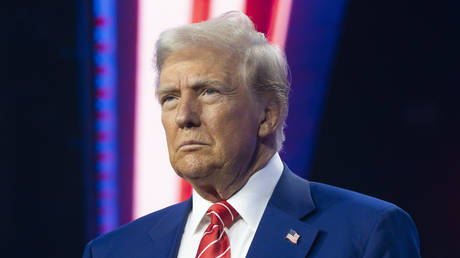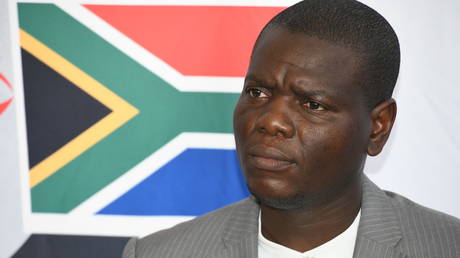Russian President Vladimir Putin.
Kirill Kudryavtsev/AFP/Getty Images
The Central Bank of Russia is maintaining a 16% interest rate due to a thriving economy.The economic growth is due to an increase in consumer activity and wage gains.But there are potential risks ahead, including the potential impacts of sanctions on foreign trade.
Russia’s economy is running so hot the Central Bank of Russia is holding rates at 16% to keep inflation in check.
In a report released on Monday by the Russian central bank explaining its decision to keep rates steady in March, the authority said economic activity quickened in the first few months of the year after a slowdown in late 2023.
The pick-up in Russia’s economy shows how the country continues to hold out against Western sanctions as its war against Ukraine stretches into its third year.
Even the Russian central bank appeared to be taken aback by how well the economy was doing.
“The strong, immediate momentum in consumer activity was one of the major surprises at the start of the year,” the central bank said in its report.
Retail sales in Russia rose 3.5% in January from a year ago, official data shows.
Consumer sentiment is also positive and people are increasingly inclined to make large purchases, according to the Russian central bank.
The central bank attributed the trend to a rise in income and to the bonus season at the end of the year — so the gains may be temporary, it added. Wages rose over 7% in Russia last year due to a labor crunch on the back of a brain drain and as men head to the front lines.
Russians weren’t just spending — they were also saving more, according to the report.
An indicator of business climate even hit its highest level since 2013, according to the central bank.
Russia’s stock market appears to be recovering, too.
On Monday, the MOEX Russian Index, the country’s benchmark stock index, also hit its highest level since February 24, 2022 — when Russia invaded Ukraine.
Even so, the central bank — which has been relatively candid in its assessment of Russia’s economy over the past two years — said there are risks ahead, in part due to the “geopolitical situation.” It didn’t mention Ukraine or the war in its report but acknowledged the impact of sanctions.
“On the one hand, recent data indicate some adaptation of the Russian economy to the increasing complexity of payments and logistics: exports are recovering, as are foreign exchange earnings,” said the Russian central bank.
“On the other hand, the effects of sanctions may still manifest themselves and have a restraining effect on foreign trade,” it added.
Just last month, the central bank also admitted Russia’s crucial oil industry is finally feeling the hit from intensifying sanctions from the West.
Russia’s central bank governor Elvira Nabiullina has also warned about the dangers of a booming wartime economy. In December, she cautioned that the economy was running the risk of overheating.
Russia posted GDP growth of 3.6% in 2023 and the International Monetary Fund expects the economy to continue growing and rise 2.6% in 2024.
To be sure, not all is well in the Russian economy.
Reports suggest that defense and government spending has driven much of Russia’s economic growth, which means it may not be translating to affluence for many Russians on the ground. Inflation was running hot at 7.7% in February.
The West is also tightening its sanctions on Russia, leaving the country increasingly isolated in the global trade and finance system. On Friday, Russia’s central bank said it sees limited options other than the Chinese yuan for its reserves.





+ There are no comments
Add yours